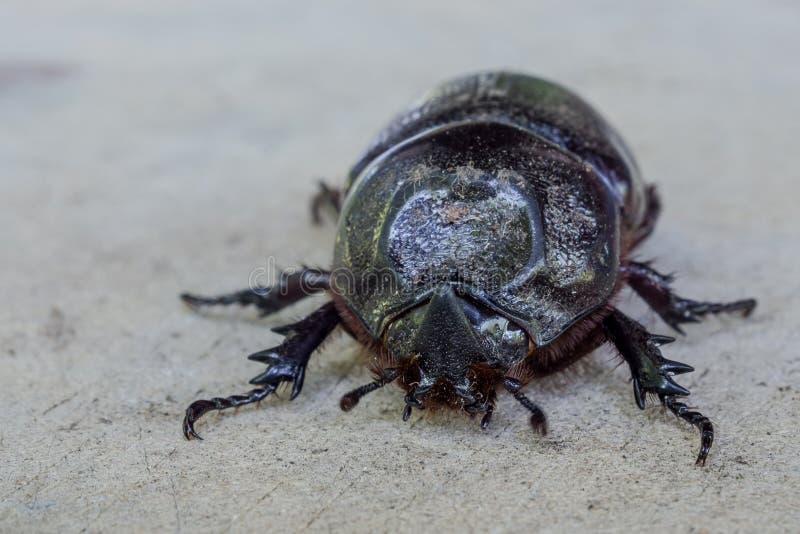
Setting up of light traps following the first rains in summer and monsoon.Longitudinally split tender coconut stem and green petiole of fronds can be treated with fresh toddy and kept in the garden to trap the beetles.Soaking of castor cake at 1kg in 5 litres of water in small mud pots and placing them in coconut gardens to attract and kill the adults.Incorporation of the entomopathogenic fungus, Metarhizium anisopliae in manure pits to check the perpetuation of the pest.Collection and destruction of various bio-stages of the beetle from the manure pits.More details are available from Integrated Pest Management Information Package.Ī list of control options from Controlling rhinoceros beetle in coconut: India an article in 'The Hindu' July 7 2005. An effective trapping method with rotting castor cake slurry kept in mud pots has been developed for rhinoceros beetle. Proper disposal of breeding grounds and field sanitation are important steps in IPM of Oryctes. Restricting and managing the breeding sites could check the proliferation of the pest. As these predators help in the natural check of the pest population, conservation of the predator fauna is essential. lissoderus, Chelisoches morio (Fab.) and species of Scarites, Harpalus and Agrypnus. The important predators are Santalus parallelus Payk., Pheropsophus occipitalis Macleay, P. Insect predators are frequently observed in the natural breeding grounds of the beetle, which feed on the eggs and early instar larvae of the beetle. The viral pathogen Baculovirus of Oryctes (OBV) is very effective and kills the grub in 15-20 days of infestation and it affects the longevity and fecundity of adult beetles. is a pathogen which kills the pest in conditions of low temperature and high humidity. The green Muscardine fungus Metarhizium anisopliae M. Oil cakes of neem and marotti ( Hydnocarpus wightiana) have also provided good results.īiological: Biological control of the beetle is the most important component of the IPM package. Prophylactic methods (preventive measures) include the use of pesticides, napthalene balls etc. Mechanical methods consist of examing trees for infestation and removing the beetle physically. The major components of the Integrated Pest Management Package consist of mechanical, chemical and biological methods. Integrated management: Integrated control measures adopted on a community basis are essential to bring an effective control of an Oryctes rhinoceros population. Apart from coconut and African oil palm recorded host plants include the date palm and a variety of palms grown for ornamental purpose, including Roystonea regia, Livistona chinensis, Corypha umbraculifera and Raphia ruffia (Gressitt, 1953 Bedford,1980) also recorded are pine apple, sugarcane, pandanus and banana (Lever, 1979). They may provide entry points for lethal secondary attacks by the palm weevil Rhyncophorus or by other pathogens, in some countries (Bedford, 1980). Attack by adults may reduce yield and kill seedlings. In younger palms the effect of damage can be much more severe (Wood, 1968 1976). rhinoceros bores into the base of cluster of spears, causing wedge shaped cuts in the unfolded fronds. From artificially pruned leaf damage stimulation studies it was observed that damage to 50% fronds corresponds to leaf area reduction of 13% and decrease in nut yield by 23% (Young, 1974). (1963) has reported a loss in yield of 5.5 to 9.1% due to beetle attack. In India damage of inflorescence is also reported in severely infested areas which cause reduction in yield up to 10% (Nair, 1986).


Some of the crushed fibre is pushed outside the entrance hole, where it indicates the insect’s presence. The imagos are the destructive stage, they bore into the crown of the palm resulting in wedge shaped or \"V\" cuts in the fronds that unfurl. The coconut rhinoceros beetle is one of the most damaging insects to coconut palms and African oil palm in southern and south- east Asia and the Western Pacific islands. There are natural factors that keep the beetle under control in its native range, its introduction into insular habitats without these natural control factors allows it to reproduce quickly and spread to become a serious pest (Nishida & Evenhuis, 2000).


 0 kommentar(er)
0 kommentar(er)
